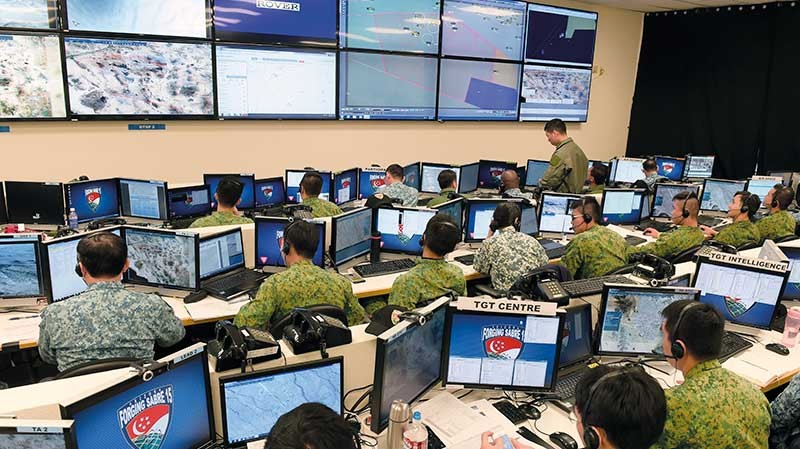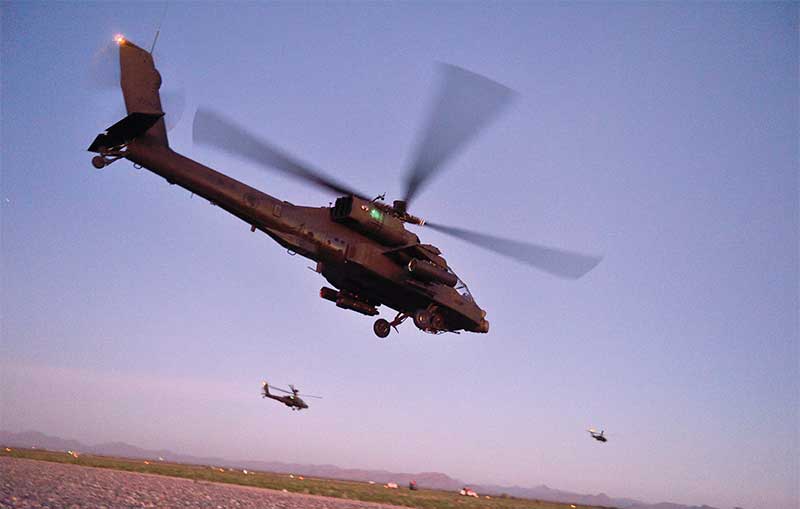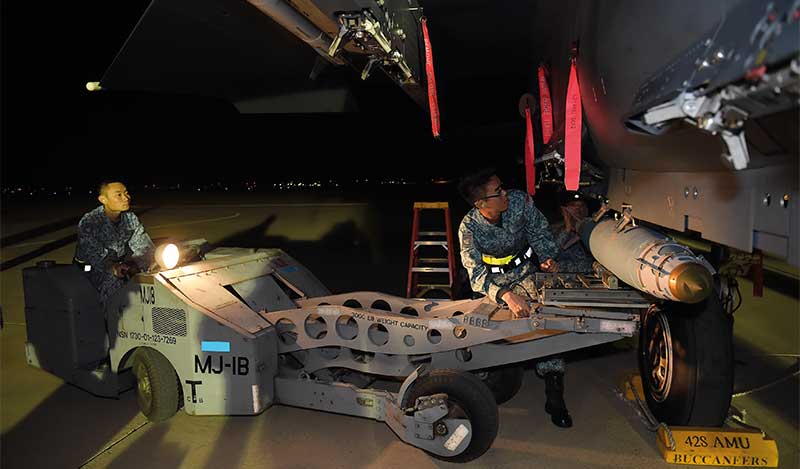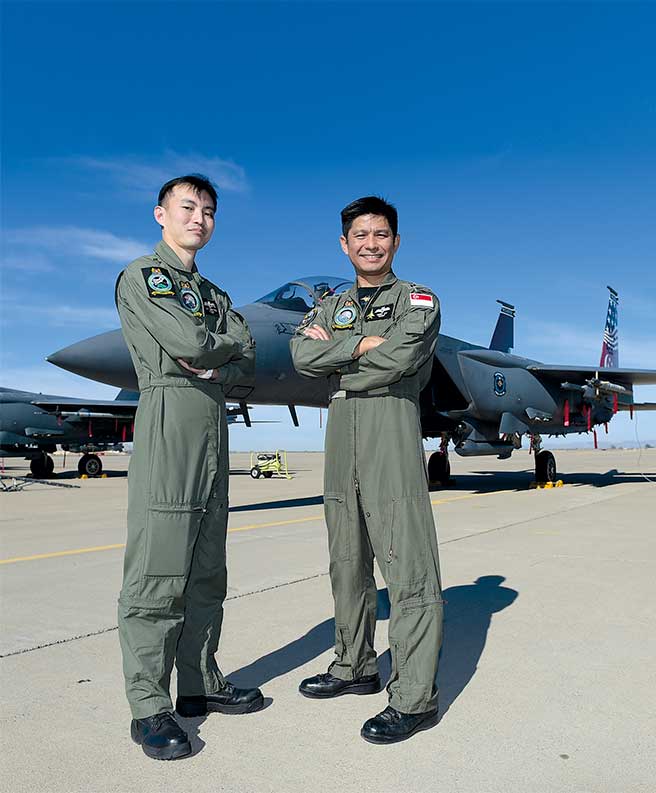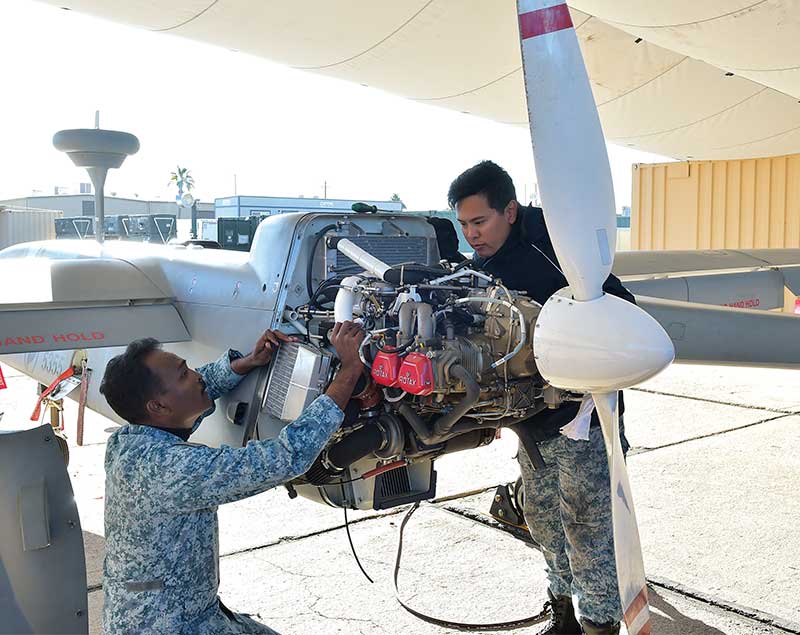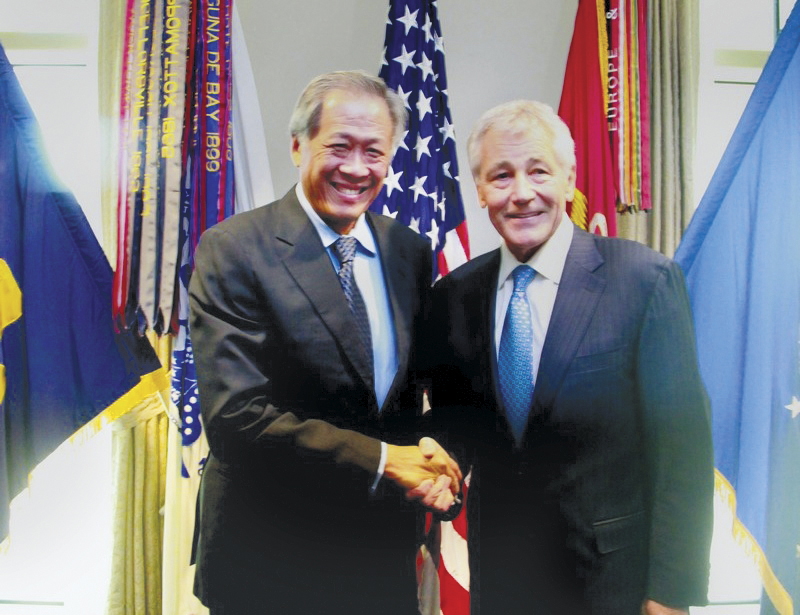OPS & TRAINING
SEEK, ANALYSE, DESTROY
11 Feb 2016
For the first time in the Forging Sabre series of exercises, the Singapore Armed Forces (SAF) conducts an integrated strike on multiple mobile targets in a single pass.
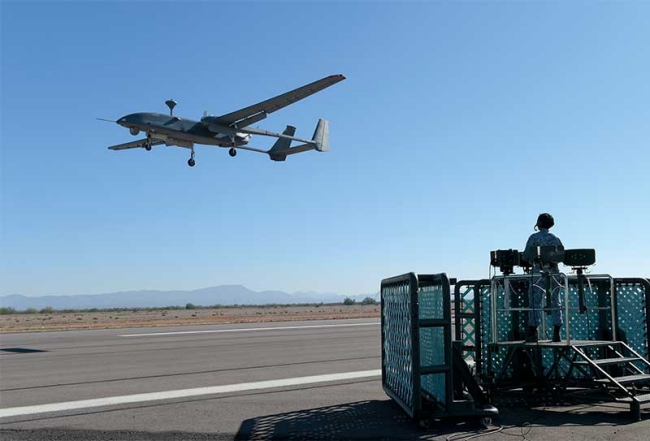
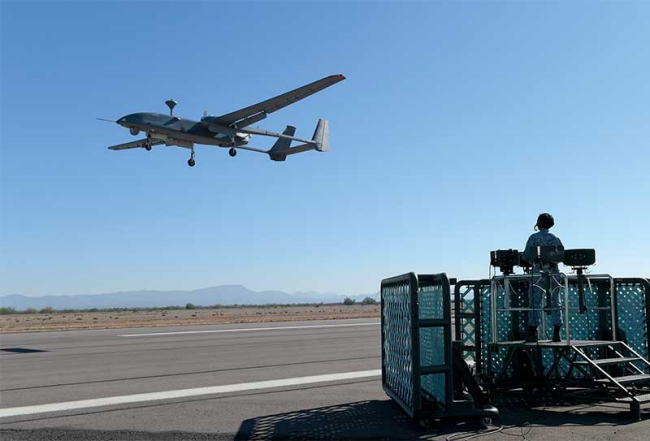
Explosions rock the vast desert of Phoenix, Arizona, United States, as four F-15SG fighter planes drop smart bombs on enemy rocket launchers. With the help of cooperative lasing by two Heron 1 Unmanned Aerial Vehicles (UAVs), the four fighter jets destroy the six mobile targets in a single strike.
In another area, Commandos spot enemy tanks. Within minutes, F-16C/D jets and AH-64D Apache attack helicopters arrive and, through cooperative lasing with the Commandos, take out the tanks with smart munitions.
This never-before-seen precision strike was what took place at Exercise Forging Sabre 2015.
Held from 1 to 16 Dec 2015, the large-scale biennial exercise was the fifth in the series that began in 2005. Six hundred servicemen and 33 assets - including 10 F-15SGs, 10 F-16C/Ds, four Heron 1 UAVs, six AH-64D Apaches and three CH-47D Chinook helicopters - were deployed in both day and night missions at the Barry M. Goldwater Range, a training area 19 times the size of Singapore.
Increased complexity
This year's exercise saw the SAF introducing multiple mobile targets and having fighter aircraft and attack helicopters take out groups of targets in single passes.
Each aircraft can only laser-guide one precision munition at a time. In the face of multiple targets, the aircraft would have to make several passes to take them all out. This would also mean giving the enemy more time to get away or to retaliate.
The workaround was a simple one involving the tight integration of multiple systems and assets. Through the Heron 1 UAVs, which were participating in Exercise Forging Sabre for the first time, the shooters were provided with the targeting data they needed to take out the multiple targets concurrently.
In addition, the Heron 1 UAVs' enhanced Air Intelligence, Surveillance and Reconnaissance capabilities provided target analysis before the information was fed to the command post. The Heron 1 UAV can scan terrain longer than its predecessor, the Searcher UAV. It is able to fly more than 24 hours, which is about three times the endurance of the Searcher, and has twice the operating range at 200km.
Overall Exercise Director Colonel (COL) Tommy Tan said that the exercise tested not only the sensor-shooter chain, but also the operators' competency and the weapons' capabilities.
"The SAF has always been looking out for capabilities which will enhance our operational advantage and the UAV is one such capability."
Intelligence in the skies
To add to the complexity of operating in the desert environment of Arizona, sand-coloured shelters were set up specially for the mobile targets to hide in. While this made it harder to identify the targets, Military Expert (ME) 1 Keith Lin said that there were other indicators that helped to pinpoint the enemy's locations.
"For example, if we're looking for main battle tanks, we will look out for the heat source at the back of the vehicle," explained the Air Imagery Intelligence Expert from 119 Squadron.
Once enemy targets have been identified, the information is piped back in real time for the command post to decide whether to engage them.
COL Tan explained: "At the command post, we are able to see what the UAV is seeing. With that confirmation...the fighter aircraft just needs to drop the bomb and it would be guided by the laser cooperative capability of the Heron 1 to strike the right target."
Dr Ng observes integrated strike

As part of his visit to Exercise Forging Sabre, Defence Minister Dr Ng Eng Hen observed the live firing from the backseat of an F-15SG on 12 Dec 2015. He saw how F-15SGs dropped their bombs at enemy targets in an integrated strike mission together with the Heron 1 UAVs.
He also interacted with exercise participants and servicemen from the RSAF's Peace Carvin II F-16C/D detachment in the US, and viewed a static display of the F-35A Joint Strike Fighter.
Commenting that the targeting and precision munitions' performance, as well as the night mission he viewed on 11 Dec, were a "real confidence booster to the SAF and its integrated systems", Dr Ng said that regular training and being able to train in the vast US airspace were reasons the SAF had been able to improve its capabilities tremendously over the last 10 years.
On the SAF's professionalism, he said: "What we do at this level is not easy (but) we just have to keep doing it. The reason we do it is that the stronger we are, the easier it is to keep our peace."
Swift & precise attacks
F-15SG pilot Captain (CPT) Sivaraj S/O Arumugam felt that the Heron 1 UAVs were a huge advantage in strike missions. "Now, when we fly into the area, the Heron 1 UAVs have already sorted out the targeting for us. It just takes us one or two minutes to take out the targets. Everything is compressed," said the 29-year-old.
This was a vast improvement from the exercise two years ago, where the F-15SGs had to fly to the target area, scan and feed information of the targets to the command post, and then wait for commands on whether to engage.
With such capabilities mastered, the battlefield is no longer defined by how powerful an asset is, but by how integrated every asset is with the rest of the force's capabilities.
Air Exercise Director Senior Lieutenant Colonel (SLTC) Liew Boon Ping explained that with Exercise Forging Sabre 2015, the SAF has effectively expanded its scope of operations to make its weapons more precise.
Citing the example of how the F-15SGs' options of using bombs have been expanded with the Heron 1 UAV, the Head of Integrated Systems Development Group added that the latter could also help to guide the bombs should an F-15SG's laser targeting fail.
Enhanced safety of helicopters
The same cooperative lasing capability was also tested with the AH-64D Apache helicopters and their Hellfire missiles.
This capability is especially useful for helicopters which operate at a low altitude and are thus at a higher risk of being attacked from the ground. With the help of UAVs which can fly higher, spot targets and lase targets earlier, the Apaches can minimise their risk.
Explained 31-year-old AH-64D pilot Captain (CPT) Ang Hiap Seng: "We can be (hiding) behind the terrain when we launch the missile, while the Heron is high up in the air doing the lasing. We are in a much better position to ensure our survivability."
For cooperative lasing to take place, the various aircraft use advanced precision munitions such as the Joint Direct Attack Munitions (JDAMs), Laser JDAMs, Hellfire missiles, and GBU-10 and GBU-12 Laser Guided Bombs.
Team effort
To make this year's exercise even more challenging, multiple mobile targets were introduced. These were remotely controlled vehicles which could travel up to 50km/h. The rule of the game was to engage the target only when it had been identified as an enemy and if it moved.
With such a large-scale exercise, success was determined not only by the destruction of the targets, but also how the command post worked as a team to take them out within the shortest possible time. Even if the targets were successfully destroyed, it would be considered a failure in the eyes of the command team if it took longer than the planned duration.
For seamless coordination during operations, it was more important than ever for the SAF to strengthen its integrated strike capabilities, noted COL Tan. "When you have a team of five (types of assets) working together, they must know each other's capabilities, strengths and weaknesses in order to conduct an effective mission.
"This is something that we will continue to work on and ensure that we not just integrate, but also continue to hone the skills of our airmen to conduct such missions."
Besides SAF Regulars, there were NSmen who participated in Exercise Forging Sabre 2015 as part of their In-Camp Training. Find out what they thought about the exercise!
Role: Communication link between ground troops and command headquarters for the strike operations
Role: Trainer in the Heli-Medical Evacuation Team, which was part of the Combat Search and Rescue mission of the exercise.
MAJ (NS) Chew was part of a three-man team working together with the commandos and pilots to extract casualties from the area of operations and treat them on board the Chinook en route to the base hospital.
ALSO READ IN OPS & TRAINING
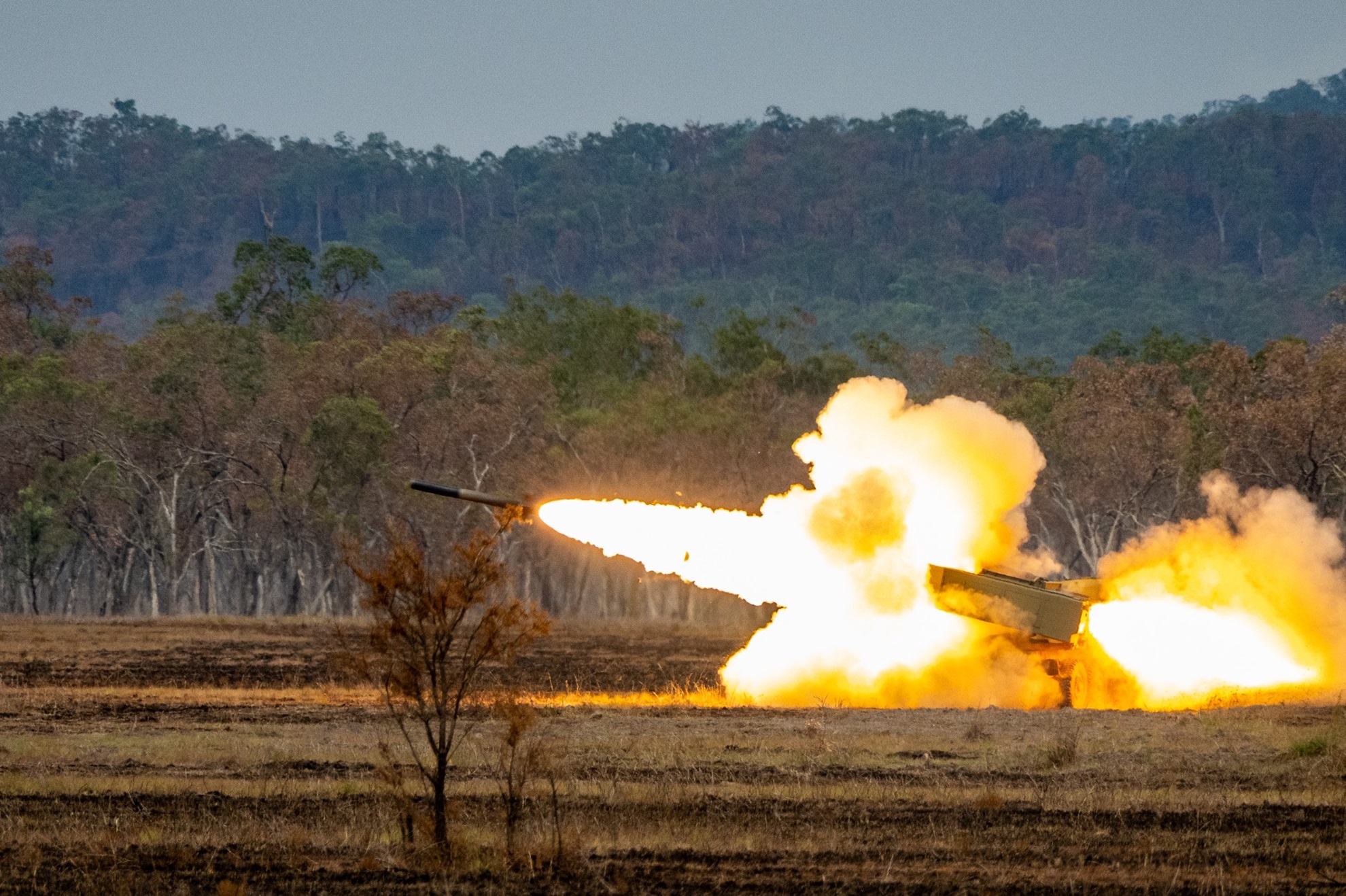
Exercise Wallaby 2025: To see better, shoot faster
31 Oct 2025
The SAF focuses on complex strike missions and multi-domain integration in Exercise Wallaby 2025, the 35th edition of its largest unilateral overseas exercise.
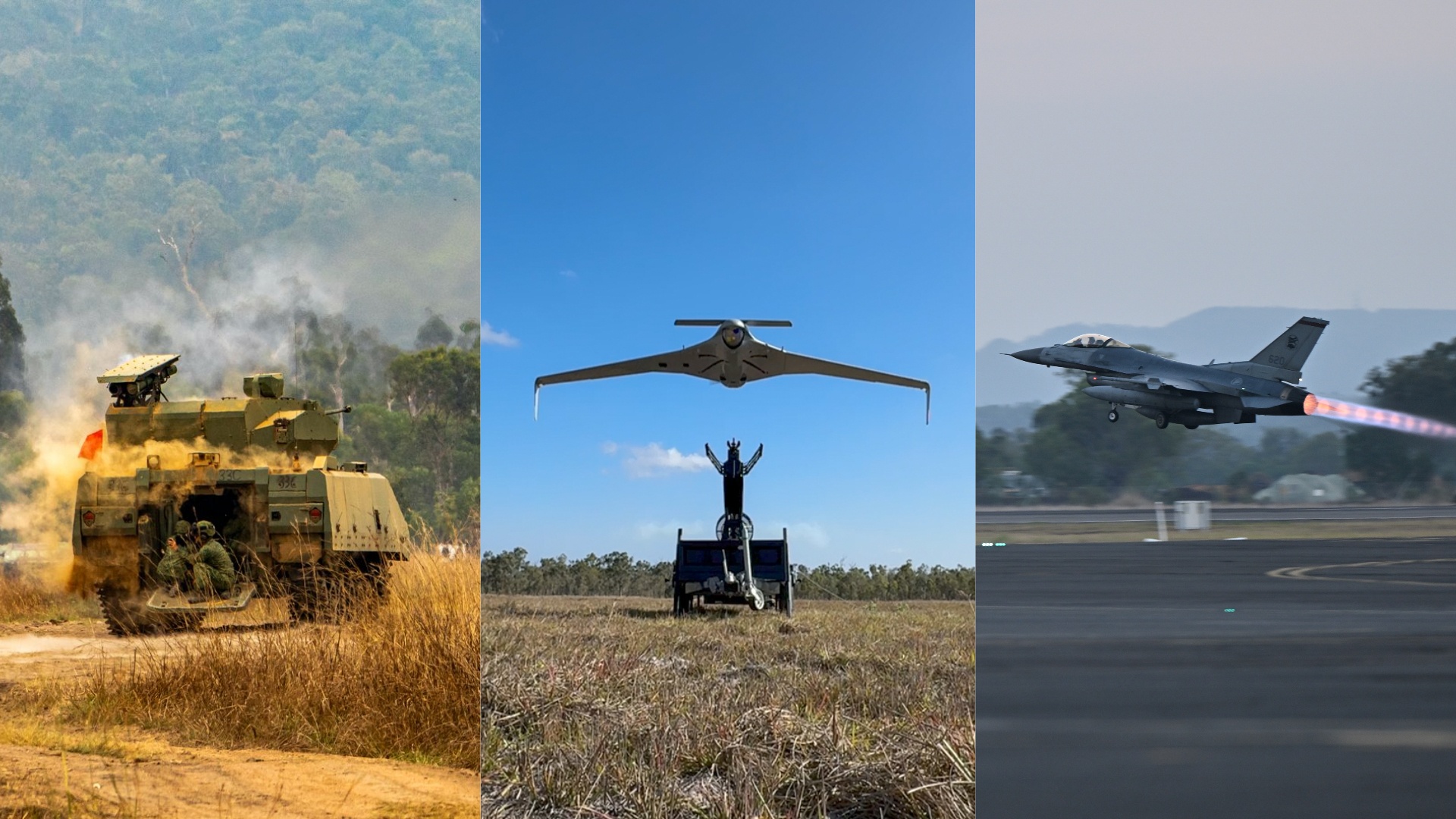
Ex Wallaby 25 – Greater Integration and Complexity
25 Oct 2025
The 35th edition of the SAF’s largest unilateral overseas exercise is an opportunity for expanded scale and deeper integration towards an effective, networked fighting force.

Ex Forging Sabre ramps up use of unmanned assets in integrated strike operations
12 Sep 2025
In this 10th edition of Exercise Forging Sabre, the SAF sharpened its cutting edge for the dynamic modern battlefield, with expanded integration between manned and unmanned platforms.

